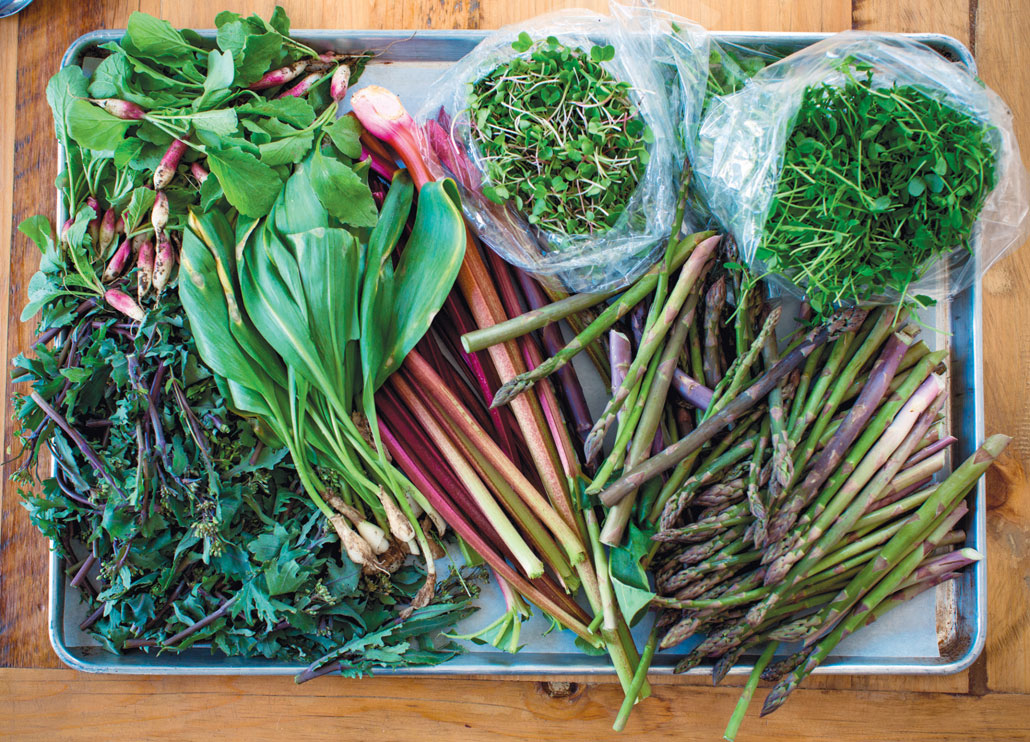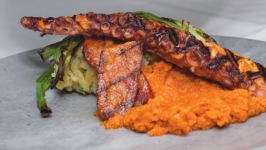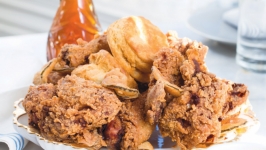Living and Learning in Hunterdon County
“Living and learning.”
Chef Josh DeChellis uses the phrase often. In returning to his childhood home, the chef has discovered a network of farmers and artisans. Here are a few of his favorites.
ASPARAGUS, RHUBARB AND FIGS
Figs are growing in Clinton Township.
And because figs take on their best flavor during the last stages of ripening, Tom Ombrello does not harvest them beforehand. “Come up the driveway—we’ll pick them for you.” From August through October, Ombrello sells his figs, $3 a dozen no matter their size, each dozen coddled in an egg carton so the figs don’t get squished. A properly ripened fig speaks for itself.
“All I do is put the sign at the bottom of the driveway.”
Chef Josh DeChellis, in anticipation, asks about quantity. Ombrello expects 50 dozen figs from one of the trees in front. Easily, he says.
Ombrello grows a variety of figs. His favorite is the Pat Muscanero fig, named after a colleague, the chemist who brought him cuttings to be propagated. In exchange, as always, Ombrello kept a few branches. The Pat Muscanero fig ripens early. Varieties that ripen later run the risk, in NJ, of frost. It’s not possible to harvest figs after even a light frost.
Hunterdon County does not offer the proper climate for figs—winters here are too harsh. Later this year, Ombrello will move his fig trees into the garage. It’s a full day’s work, with the help of a tractor, to bring his fig trees in from the cold.
Earlier in the season, Ombrello’s driveway customers seek asparagus. Bundles sit in a cooler; $2.50 a bunch. (On a sunny day, he says, you can measure hour by hour how fast they grow.) Ombrello’s favorite asparagus is the Jersey Knight, developed at Rutgers University and adapted for growing in New Jersey. From late April through June, asparagus is a staple at his table. “Not a day goes by.”
Ombrello is a biologist and a professor, known for his work on historic “witness” trees. This summer, he is hoping to coax new life from the stump of the Pepperidge Tree in Cranford. The massive tree was cut down in 2015 following a vote by the township committee, whose members expressed concerns of branch collapse. The tree was not in perfect health, says Ombrello, but it was not dead. Ombrello has seen sprouts in the stump; he will know by fall if they take. Ombrello has dated the tree to 1788.
In Clinton Township, Ombrello also grows rhubarb, shrubs and Christmas trees. His farm has no name. At five acres, it’s one acre shy of even being a farm. “We’re just a piece of land,” he says. “My wife says it’s a hobby gone berserk.”
DeChellis, driving off, devours asparagus spears as if they were French fries.
TOM OMBRELLO
Payne Road, Clinton Township
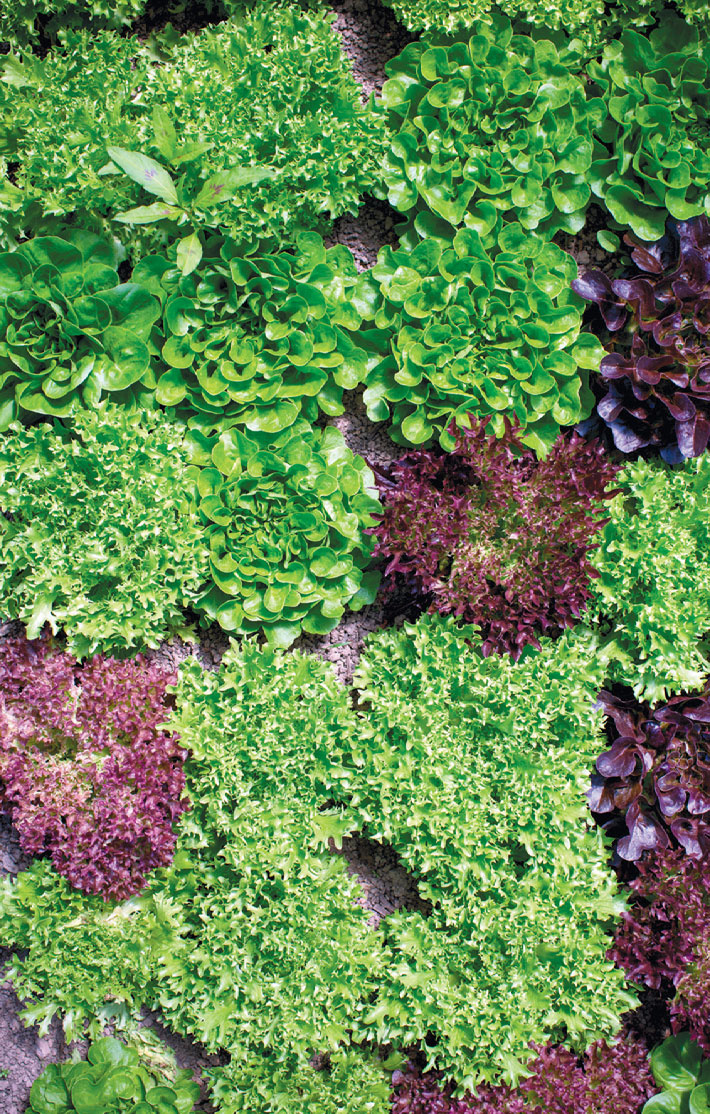
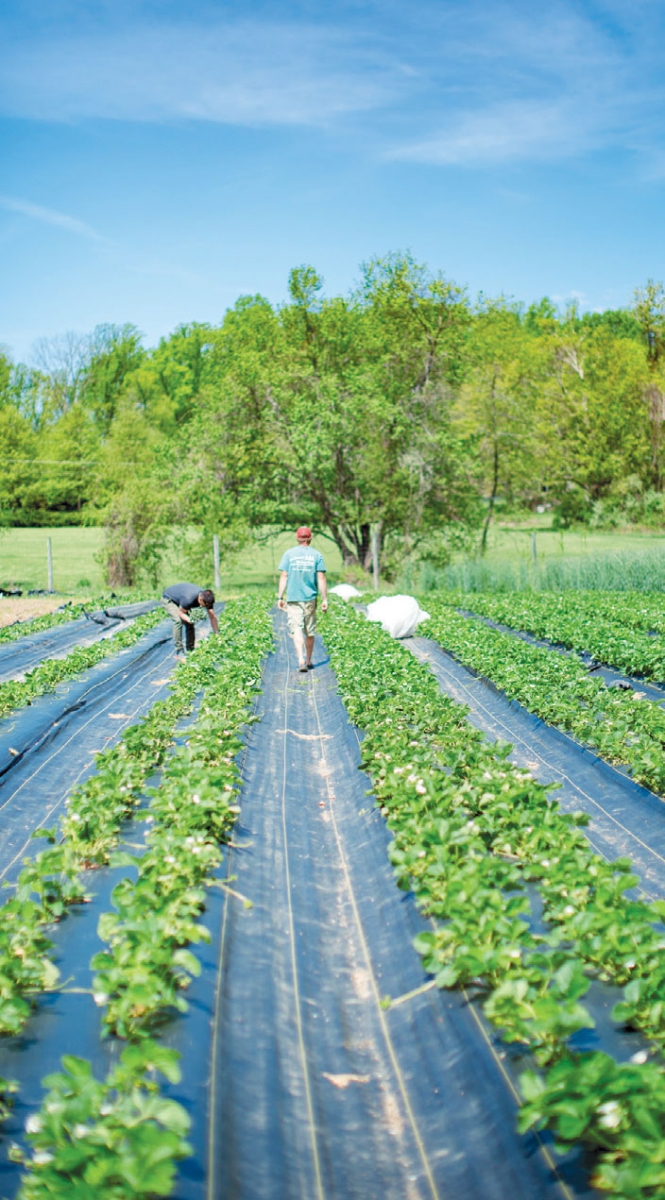
FLOWERS, BABY SWISS CHARD, MITSUBA
Josh DeChellis pulls a few tender flowers from top of the kale plant. This is kale rabe, and it is surprisingly sweet. “I might need this for the halibut tonight.”
Two Barn Farm in Pittstown is a routine stop for the chef. De- Chellis likes to hand-select his beets, eggplant, heads of lettuce, tomatoes, mushrooms. If you see This Morning’s Strawberries on the Juniper Hill dessert menu, it’s likely that DeChellis picked the berries himself. At Two Barn Farm, the chef is such a regular that he just helps himself if no one’s around, taking photos of his haul for bookkeeping purposes.
Two Barn Farm uses regenerative farming practices, with no chemical fertilizers, herbicides or synthetic pesticides. The farm grows fruits and vegetables, including beans, corn, broccoli, leeks, onions, potatoes, squash and raspberries. Jane Smith, Jon Smith’s mother, grows flowers—anemones, tulips, dahlias and heirloom mums. DeChellis also commissions specific ingredients, such as Japanese mitsuba.
For Jon Smith, farming is very much a lifestyle choice. “I eat really well,” he says. His friends are of the age where they’re getting married, starting to earn real money. Smith? “I live with my mom in a barn.”
DeChellis pulls off a leaf of baby Swiss chard. The baby carries none of the plant’s characteristic bitterness. “Super delicious,” the chef says. “It would justify a sweeter dressing.”
In the field, with ingredients maturing in front of you, a chef thinks differently. The baby Swiss chard, says DeChellis, would pair well with strawberries. With luck, they’d be ready at the same time. DeChellis contemplates an almond oil dressing.
Recipes also come direct from the farmer. Jon Smith likes to cook and bake bread. He watches Jacques Pépin, knows how to debone a chicken. His favorite breakfast is eggs and greens, both farm fresh. More important, Smith knows how best to appreciate his produce. Potatoes so new the skin rubs off with your thumbs? They’re divine with farm-fresh dill and butter, says Smith. He and DeChellis have had numerous conversations about potatoes, comparing types and cooking methods. At Juniper Hill, new potatoes with dill and butter were on the menu for weeks.
“Learning how to cook from the farmers is just as important as learning from the three-star Michelin chef,” says DeChellis.
Two Barn Farm markets its produce through a CSA program, at the Clinton Farmers’ Market and the Stangl Factory Farmers’ Market.
TWO BARN FARM
717 Sidney Rd. West, Clinton Township
908.500.0101
twobarnfarmnj.com
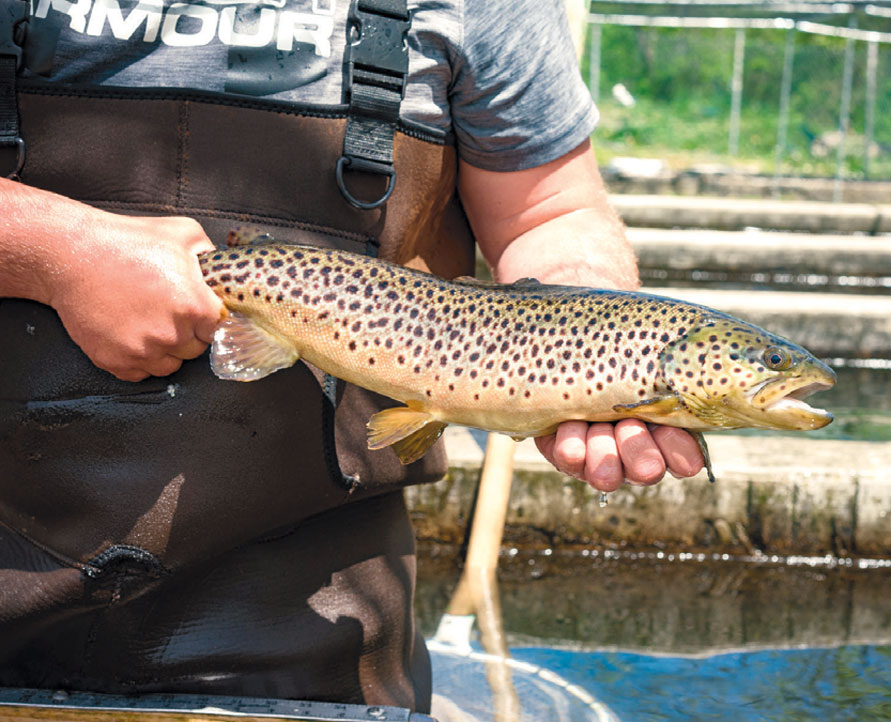
WRANGLING TROUT
“I heard a rumor years ago that Per Se was getting fish from a Jersey trout hatchery,” says DeChellis.
Turns out it wasn’t a rumor. The location, on the banks of the Muskanectkony Creek, a tributary of the Musconetcong River, is so ideal that a hatchery on this spot dates back to the 1800s. The consistently cold water of a natural underground spring (51 degrees, winter or summer), which flows at 1,000 gallons per minute, is ideal for hatching trout. And the best part? The Musky Trout Hatchery in Asbury is in the chef ’s back yard, just 15 minutes from the restaurant. DeChellis grew up nearby and self-identifies as someone obsessed with fly fishing. Yet, he says, “I had no idea this place existed.”
Musky Trout Hatchery was established in 1958 by Vern Mancini, and is run today by his son Jeff Mancini, an amicable businessman who seems to love his work, but who also allows the trout to speak for itself. (Mancini’s son Chase is the third generation of the family to work in the business.) The hatchery raises tens of thousands of fish, including a variety of trout, plus large-mouth bass and catfish. It stocks ponds and recreation areas in addition to offering its products to restaurateurs.
DeChellis, who has a cooler filled with ice in back of the Jeep, likes to stop by and choose his own trout—chef as fish-wrangler.
“I don’t know how many hatcheries you’ve seen,” says DeChellis. “They don’t look like this.”
At Juniper Hill, trout is not as popular as salmon, but that’s simply because salmon is more common. “Salmon is always going to sell more.” But one taste, says DeChellis, and a customer’s perception changes: “Oh, I get it now.”
At Musky, the consistently cold water offers a unique environment for a freshwater fish. “You can’t get any purer.” DeChellis describes the taste of the fish as lean, clean and meaty. At the restaurant, he likes to serve it charred with a miso sauce, a global expression for a local fish—his Japanese epiphany come home.
MUSKY TROUT HATCHERIES
279 Bloomsbury Rd., Asbury
908.479.4893
muskytrouthatchery.net

ELEVEN MANGALITSA PIGLETS
“What? You know a guy raising Mangalitsa?”
In chef circles, word spread quickly about a New Jersey find. Orders were placed. And last fall, Tim Merkel stood with a pig on his shoulder in New York City, at the corner of Bowery and Great Jones Streets, waiting for the light to change. Behind him, people on the sidewalk angled for the best view, taking photos.
Merkel was making a delivery to Gemma, a restaurant in the Bowery Hotel. Josh DeChellis used to work nearby, at Il Buco Alimentari, and had alerted his colleague, chef Carlo Bigi, of his Mangalitsa find. Meanwhile, at Juniper Hill, DeChellis was offering his hand-crafted Mangalitsa salami.
This spring, 11 Mangalitsa piglets were born at Farmtop Farm Market, a 7-acre-plus farm on Warren Glen Road in Greenwich Township, just over the Hunterdon County boundary. Merkel is thrilled that chefs are responding to the unique flavor of the meat, which he considers a compliment to the terroir of New Jersey. His Mangalitsas, when they are nearly mature, are fed hickory nuts, chestnuts and apples. The meat carries its characteristic nuttiness, but is also sweet.
The Mangalitsa is an Old World breed, a heritage breed indigenous to Hungary. The breed is known for its creamy lard—brilliant fat, as DeChellis calls it. The Mangalitsa is stout, and hairy enough to be mistaken for a sheep.
In Hungary, farmers were choosing breeds that were easier to raise, and, by the 1990s, the Mangalitsa was in danger of extinction, with a population that fell below 200.
To a chef, however, the Mangalitsa is a gem, and recognition of its superior taste has helped stage a comeback for the breed. A number of Mangalitsa farmers have popped up in the States.
Nonetheless, for both farmer and chef, the Mangalitsa is a long game. It can be 18 months before a pig hits its prime. And while cured meats from a Mangalitsa pig are deeper and more complex in flavor, the high fat content means that the drying time is longer. DeChellis is planning now for his spring 2019 menu.
Farmtop is also home to ducks, chickens and sheep. So, while DeChellis may be willing to wait for the Mangalista, he also senses an opportunity.
“You have any duck eggs in the fridge?”
FARMTOP FARM
607 Warren Glen Rd., Bloomsbury
908.310.6856
Facebook: Farmtop Vineyard & Farm Market
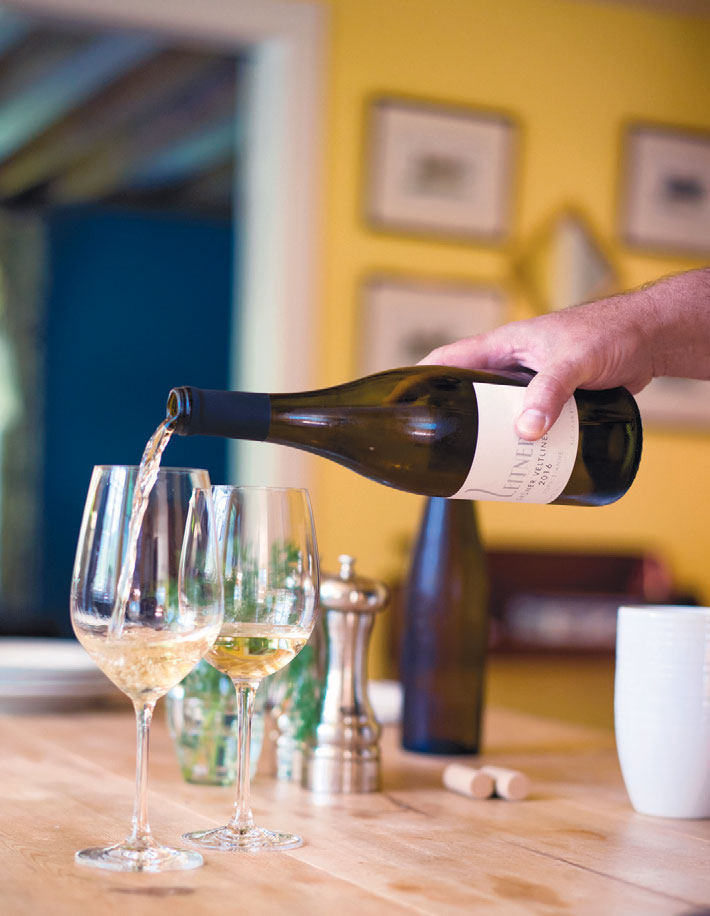
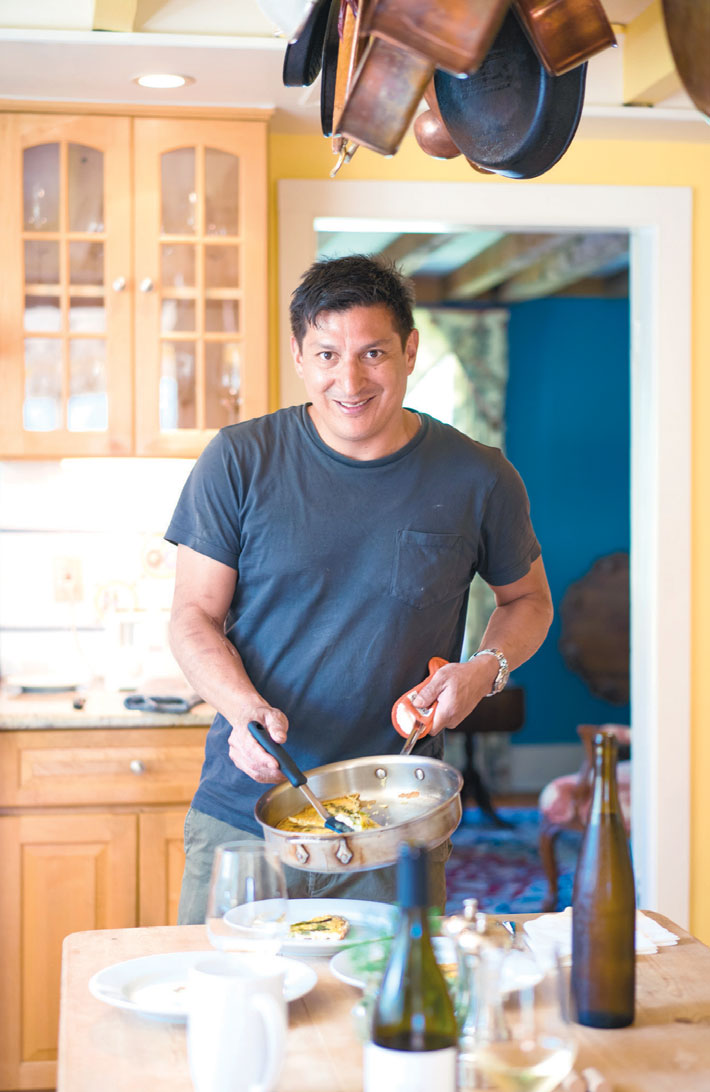
“DO YOU WANT TO MAKE WINE?”
Mount Salem Vineyards was the talk of the barber shop. Which, truth be told, was the marketing plan from the beginning.
Against expert advice, Peter and Charlene Leitner launched Mount Salem Vineyards in 2005, with, as they note, little more than a south slope and shovel. Before they did so, they had to answer a critical question: “Do you want to make money, or do you want to make wine?”
It’s a valid question. Even in Napa or Willamette Valley, where the climate and the soil are conducive to the creation of stellar wines, wineries are built as monoculture investments, and grapes are harvested early to protect those investments. In Hunterdon County, the terroir presents challenges. It’s humid. Hurricanes barrel through. Birds feast on the ripening fruit.
The Leitners wanted to make wine. In the tradition of grand Old World wineries. Their process is labor intensive—indigenous yeast and lot of Hail Marys, says Peter Leitner. (Indigenous yeast is the natural yeast that forms on the grapes.) The Leitners minimize the use of pesticides. “The soil is loaded with earthworms,” says Leitner, with more pride than is usually associated with earthworms. The grapes are harvested when ready. In the industry, their methods are considered risky. Leitner has a counter to that: This is how wine has been made for 4,000 years.
Last year, a black bear meandered the property. Birds can be deterred by nets, but, notes Leitner wryly, a net is nothing to a bear. “We lost a lot of grapes.”
Then, the bigger bear. Mount Salem Vineyards had the stigma of being in New Jersey. The state’s wine industry is young, and winemakers face challenges in convincing others of the quality of NJ vintages. The Leitners, again against the advice of experts, deliberately chose not to promote their wines, that for years they didn’t bother with a website. They reasoned that the only way a person would believe that a fine wine could come from New Jersey was if that wine were recommended by trusted friend. Wines from Mount Salem Vineyards would have to be a person-to-person discovery.
Which is just what happened with Josh DeChellis, who heard about the wine from his barber, Tom Seal of Front Row Barber in Clinton. Leitner is also a client of Front Row Barber, and Seal is a wine nerd.
DeChellis tried the wine. “Goosebumps,” he says. First from the wine, then from the fact the vineyard is in his neighborhood.
Through the years, the Leitners maintained their Field of Dreams marketing philosophy, believing that if they built it, people would come. “When the big-league wine critics show up in our driveway, that’s when we launch a website,” Leitner said.
The critics have spoken, from the Wall Street Journal (“remarkably good”) to Reisling Global (“wonderful fragrance and silkiness”) to American Winery Guide (“a hidden gem”). Mount Salem Vineyards today has a website.
DeChellis tries the Gruner Vetliner. It’s named Sophie-Anne, after the Leitners’ daughter. The color is glorious, the energy vibrant, the wine is elegant yet has weight.
“I think I’ll probably have to leave with some stuff,” says DeChellis.
MOUNT SALEM VINEYARDS
54 Mount Salem Rd., Pittstown
908.735.9359
mountsalemvineyards.com


